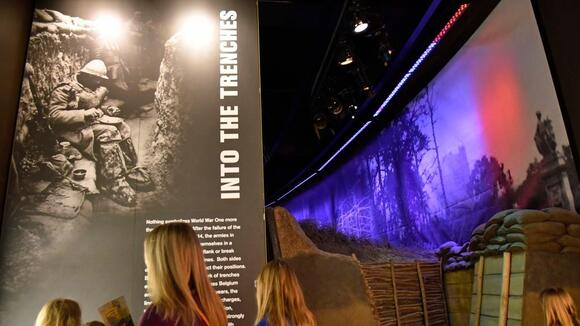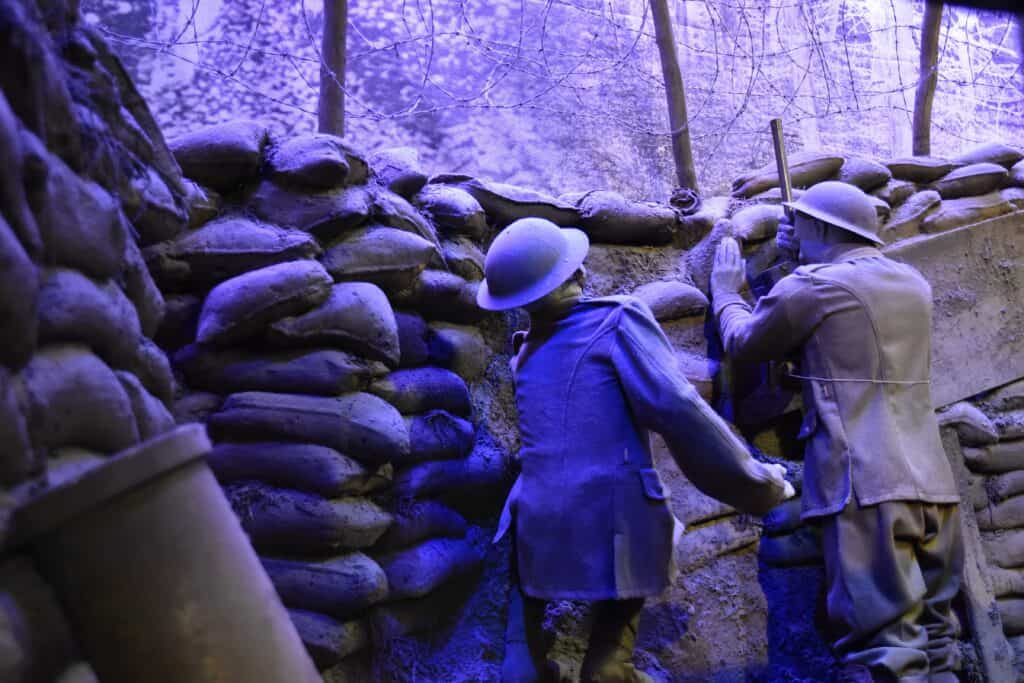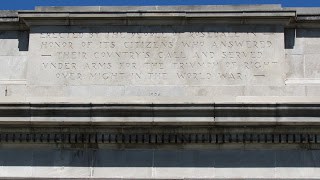The National World War 1 Museum and Memorial is not a memorial to the war. This national treasure is a reminder of the human spirit and the never-ending fight for peace. Life in the trenches was filled with short periods of sheer terror followed by long spans of boredom. Stretching across the horizon, these muddy, rat-infested trenches offered defense from shrapnel and snipers. When Union General Sherman noted that “War is Hell”, he probably hadn’t imagined it on a global scale. A visit to this top 25 U.S. museum serves as a reminder to all of the fight to preserve peace, liberty, and the reduction of human suffering.

A Monument To The Human Spirit
“The War to End All Wars” was one of the deadliest conflicts in history. Allied forces clashed with the Central Powers in a real-life game of Risk. The five years of turmoil left the countryside scarred, and families broken. It did not however extinguish the human spirit. The good in mankind rose above all of this to help heal a world that had been dark for so many days. The same year that WWI ended, Kansas City leaders came together with a plan to construct a lasting memorial to those who served.

By 1921, a site had been selected, and 100,000 people gathered for the dedication. Within five years, the memorial would be built, and an even larger crowd would be on hand for its opening. The museum served the city, and its visitors, for many years. By 1994, the museum was closed due to structural concerns. A plan was made to revitalize, as well as expand the site, so that it could better showcase the growing collections of artifacts. During this period, it was given the distinction of being proclaimed the nation’s official World War 1 Museum. When it reopened in 2006, the completely redesigned space had become a showcase. Its 217-foot-tall tower, topped with an eternal flame, stands as a reminder of the sacrifices made by so many.

Life In The Trenches
World War 1 was a battle fought in the trenches. Long series of dugouts were constructed across the fields, and the battle of small gains was waged. The trenches were designed to slow the advance of the enemy, while offering some protection from artillery and snipers. These man-made troughs were often reinforced with wooden beams and sandbags, as well as guarded with barbed wire. Flooding was a concern, as well as infestation by various pests. Life in the trenches was difficult, and soldiers would often rotate through them in stays of up to two weeks. It is estimated that if all of the trenches dug out during the war were laid end to end, they would total over 25,000 miles long. Be sure to check out the viewing holes to see soldiers in the trenches.

Rise and Fall of an Empire
As we made our way through the museum, we learned all about life in the trenches. Information is presented in an easy to understand approach. Don’t forget to ask staff members to help shed additional light on the exhibits. Be sure to interact with them during your visit. They are a wealth of information and everyone we met was so helpful and informative. Tours are available for those interested, and short films highlight key events of the war. Additional displays show the political, social, and economical impacts that rippled through Europe. The end of WWI would offer temporary relief and a short time to heal. Our planet would once again be plunged into another world war in just three decades. (You can read about the WWII Museum here.)





